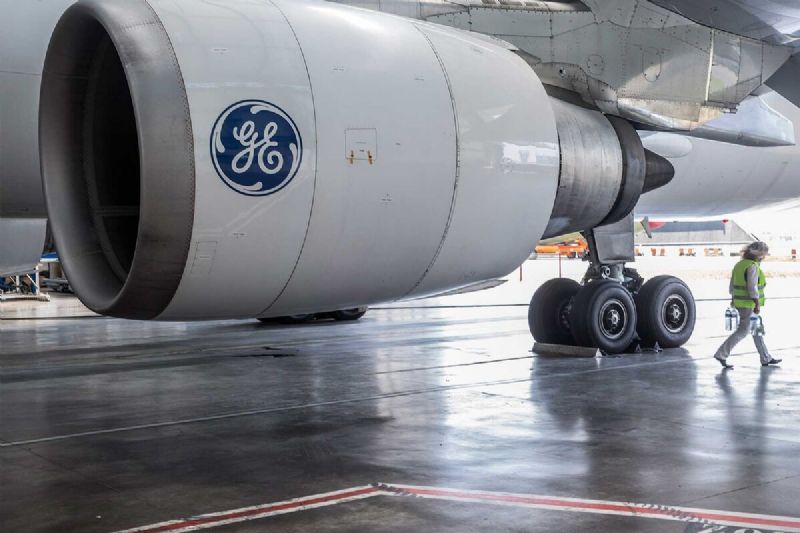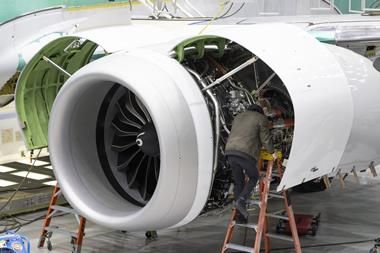
GE Aerospace plans to significantly hike its investment this year on efforts to improve quality and boost output at its facilities and those of suppliers.
The Ohio-based engine maker will spend $650 million this year on the efforts, more than twice the $335 million it spent on similar projects last year, GE Aerospace says on 12 March.
The company intends for the funds to help it and suppliers address nagging operational problems and shore up production of both commercial and defence powerplants.
GE Aerospace needs to hike production of the CFM International Leap turbofans it makes with Safran Aircraft Engines to meet Airbus and Boeing’s production goals
The funds will “strengthen the company’s US supply chain, helping suppliers build and maintain capacity and capabilities needed for sustained growth”, GE Aerospace says.
The company – and manufacturers across the aerospace industry – have been working to overcome supply chain, production and quality troubles that executives have largely attributed to shortages of skilled workers. GE Aerospace and partner Safran Aircraft Engines – which jointly own engine maker CFM International – have particularly been working to hike output of CFM Leap turbofans, which power Airbus A320neo-family jets and Boeing’s 737 Max.
News of the investment comes as General Electric plans on 2 April to spin off its energy business, leaving GE Aerospace as its sole remaining operation. At that point, General Electric will take the GE Aerospace name.
“We are making significant investments in the future of flight and in the dozens of communities and supplier partners helping us build it,” GE Aerospace chief executive Lawrence Culp says of the planned spending. “These investments are part of the next chapter for GE Aerospace, supporting cutting-edge equipment and safety enhancements that will help us meet our customers’ growing needs.”
Of the planned $650 million, the company expects to spend $450 million on “new machines, inspection equipment, building upgrades and new test and safety enhancements” at 22 of its US facilities.
Examples include a planned $107 million investment in Cincinnati-area facilities for the purpose of increasing commercial and military aircraft engine production. That money will specifically fund acquisition of more additive manufacturing (also called 3D printing) machines, tooling and other equipment, and upgrades to engine test facilities, GE Aerospace says.
The company plans to spend $54 million to expand its 3D printing capabilities and accelerate production of engine components at its Auburn, Alabama facility.
In North Carolina, GE Aerospace plans to spend $46 million this year on production-capacity expansion and quality improvement. Of that, it has earmarked $22 million for machines and tooling in Wilmington, $11 million to support engine-component production in Asheville, $7 million to boost engine assembly capacity in Durham and $5 million on quality inspection equipment and other machinery in West Jefferson.
Additionally, GE Aerospace plans to spend $30 million to support assembly and testing of military helicopter and fighter jet engines at its site in the Boston suburb of Lynn, Massachusetts.
“Approximately 10% of the overall investments into GE Aerospace’s facilities will go toward inspection equipment and specific tools that help preserve quality,” it says.
The company’s 2024 plan calls for an additional $100 million investment in “supplier partners in the United States”.
“Most of the $100 million investment in the external supplier base will provide specific tools and customised dies needed to produce castings and forgings that later become engine components,” the company says. “The injection into its supplier base, more than double last year’s amount, ensures suppliers are using the newest tools to produce parts, further reducing the possibility that defects occur.”
Makers of cast and forged metallic components have particularly struggled with quality problems in the years following the Covid-19 pandemic, analysts have said. Such suppliers, which rely heavily on skilled workers to produce the incredibly complex parts, lost many veteran workers during the pandemic.



We use cookies to improve your experience. By continuing to use our site, you accept our Cookies, Privacy Policy,Terms and Conditions. Close X